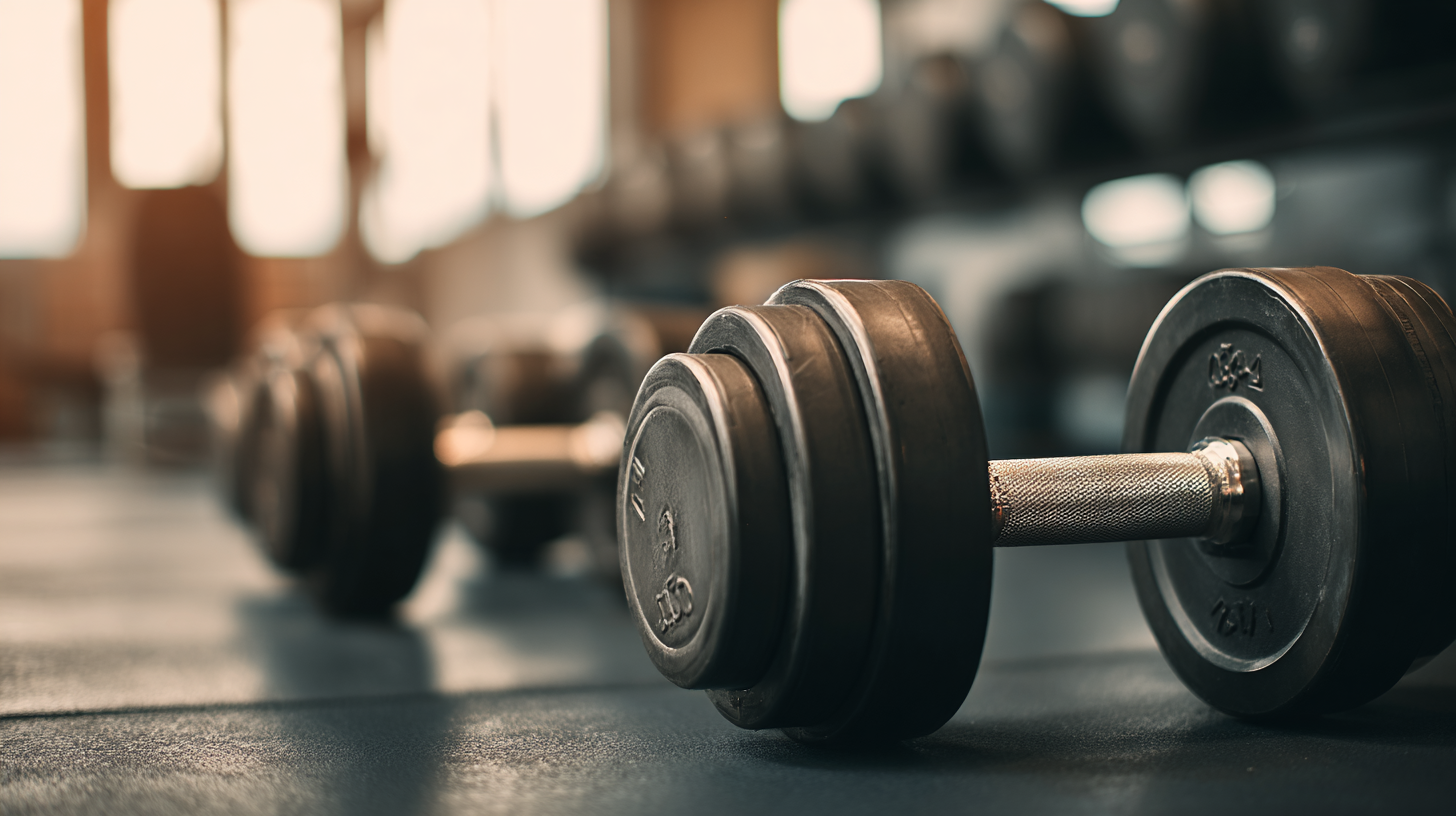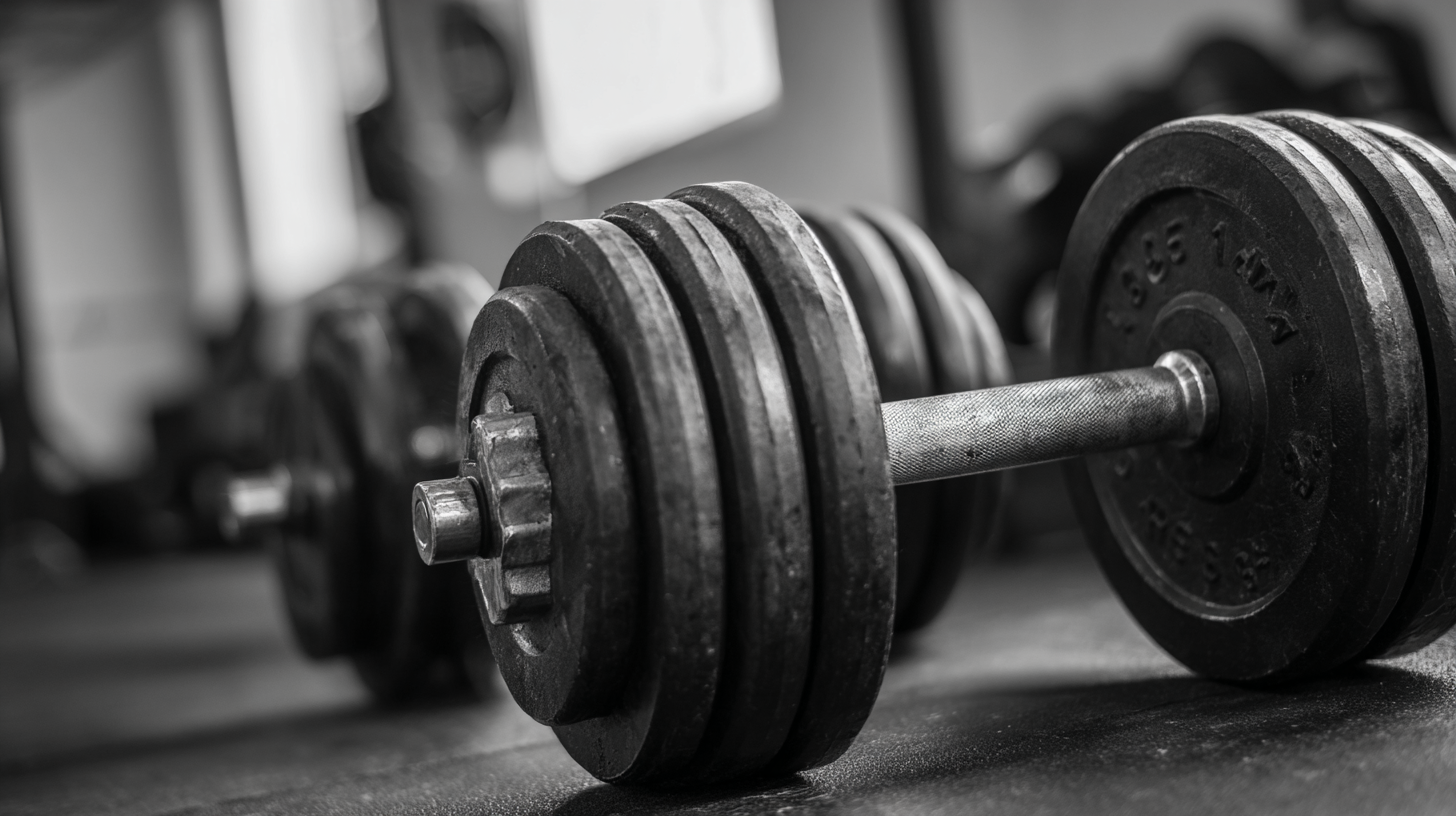Incorporating heavy dumbbells into your fitness routine can significantly enhance your workout's effectiveness and efficiency. Recent studies indicate that strength training, particularly with heavy weights, can lead to a 20-30% increase in muscular strength and mass over a span of just a few weeks (American College of Sports Medicine, 2022). Heavy dumbbells serve not only to build muscle but also improve overall physical performance, with a report by the National Strength and Conditioning Association highlighting their role in increasing power and endurance. Furthermore, resistance training using heavy dumbbells has been shown to boost metabolic rate, aiding in fat loss and weight management. As fitness enthusiasts seek to maximize their training outcomes, understanding the proper techniques for incorporating heavy dumbbells is essential for achieving both immediate and long-term fitness goals. Embracing these weights can transform a typical workout into an advanced training regimen that challenges and rewards the body in profound ways.

Incorporating heavy dumbbells into your fitness routine can be a game-changer, especially for those looking to enhance strength training. One of the most significant benefits of heavy lifting is injury prevention. By strengthening connective tissues, ligaments, and tendons, heavy weight training provides a foundation that helps protect against injuries. This is particularly crucial for individuals over 60, who may be more susceptible to injuries. As muscle strength increases, the body can better support itself during various activities, reducing the risk of falls and other related injuries.
Additionally, heavy dumbbell training can lead to remarkable transformations, as illustrated by the experiences of women aged 60 to 100 who embraced weightlifting. Many of these women have successfully reversed osteoporosis while gaining not just physical strength but also confidence and vitality. By swapping gentle exercises for more rigorous training, they forged connections and built a supportive community, showcasing that strength training is not just about physical benefits—it's also about enhancing overall quality of life. Whether one is new to weightlifting or seeking to deepen their practice, heavy dumbbells can play an essential role in fostering a stronger, healthier future.
When choosing the right heavy dumbbells for your fitness level and goals, it is essential to assess your current strength and experience. Beginners should start with lighter weights to develop proper form and technique before progressing to heavier dumbbells. A weight range that allows for 8-12 repetitions per set is ideal for muscle growth, while advanced lifters can push their limits with heavier options that challenge them further. Consider adjustable dumbbells as they offer versatility and are cost-effective, accommodating your growth in strength over time.
Additionally, it’s important to align your dumbbell selection with your fitness goals. If your aim is to build muscle, opt for heavier weights that you can lift for fewer repetitions. Alternatively, for weight management or endurance training, lighter weights with higher repetitions may be more suitable. Always ensure that the dumbbells you choose feel comfortable in your hands, as grip and stability play a crucial role in performing exercises safely and effectively. Taking the time to select the appropriate dumbbells will set a solid foundation for your strength training journey.
Incorporating heavy dumbbell exercises into your weekly workout schedule can significantly enhance your strength and muscle-building efforts. To start, allocate specific days for upper and lower body workouts, ensuring you target all major muscle groups. For example, designate Mondays for chest and triceps, while Thursdays can focus on legs and shoulders. This structured approach allows ample recovery time between sessions, which is essential when lifting heavy weights.
When integrating heavy dumbbells, it's crucial to focus on form and technique. Tips for proper execution include starting with lighter weights to perfect your movements before progressing to heavier dumbbells. Always engage your core during lifts to maintain stability and prevent injury. Additionally, consider incorporating compound movements such as dumbbell squats or deadlifts, which engage multiple muscle groups and optimize your workout efficiency.
Lastly, remember to listen to your body. If you experience fatigue or soreness, take a rest day or incorporate active recovery to keep your routine sustainable. By following these strategies, you'll not only maximize the benefits of heavy dumbbells but also ensure a well-rounded and enjoyable fitness experience.

When incorporating heavy dumbbells into your fitness routine, it's essential to recognize and avoid common mistakes that can compromise your safety and effectiveness. One of the most frequent errors is using weights that are too heavy too soon. This can lead to improper form, increasing the risk of injury. To ensure you maintain control, prioritize mastering your technique with lighter weights before progressing to heavier loads.
Another mistake many make is neglecting the warm-up. Without a proper warm-up, your muscles are less prepared for the strain of heavy lifting, which can lead to unnecessary strain or injury. Always spend a few minutes engaging in dynamic stretching and lighter exercises to prepare your body for the workout ahead.
Tips:

When incorporating heavy dumbbells into your fitness routine, prioritizing safety is paramount to prevent injuries. First, ensure that you use a proper warm-up to prepare your muscles and joints for the weight. Dynamic stretches and light cardiovascular exercises can increase blood flow and enhance flexibility. This preparation can significantly reduce the risk of strains or sprains during your workout.
Next, it’s crucial to focus on your form and technique while lifting. Always start with lighter weights to master the movement before progressing to heavier dumbbells. Keep your core engaged, maintain a neutral spine, and avoid locking out your joints. Proper grip and control will allow you to lift weights safely and effectively. Additionally, consider using a spotter when attempting heavy lifts, as they can provide assistance and support, ensuring that you remain safe throughout the exercise. Listening to your body and recognizing when to take a break is essential in any strength training regimen, especially when handling heavy weights.
| Tip | Description | Recommended Weight | Frequency |
|---|---|---|---|
| Warm-Up | Always start with a warm-up to prepare your muscles and joints. | Lightweight example: 5-10 lbs | Daily |
| Proper Form | Focus on maintaining proper form to prevent injuries. | Varies based on exercise | Always |
| Weight Selection | Choose a weight that allows you to complete your sets with good form. | Start with 50-70% of your max | Each workout |
| Rest Intervals | Incorporate rest intervals to allow muscle recovery. | N/A | 30-90 seconds |
| Listen to Your Body | Pay attention to signs of pain or discomfort and adjust your routine. | N/A | Always |
| Cool Down | Finish with a cool down and stretching to enhance recovery. | Lightweight example: 5 lbs | Daily |






